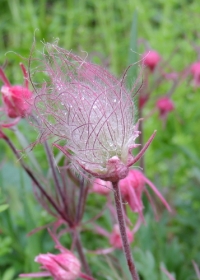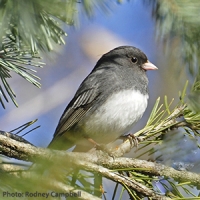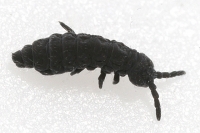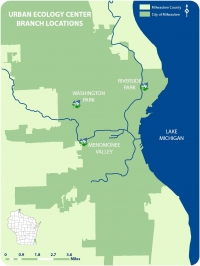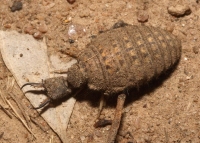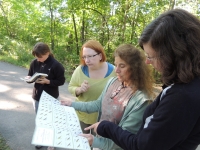
Research Highlight: Share your Urban Ecology Center wildlife sightings - there's an App for that!
Many of the Urban Ecology Center staff, volunteers and community members love taking photographs of the wildlife and vegetation in our parks. Who can discount the natural beauty of an unfurling fiddlehead or the pure white flower of the bloodroot? Many photographers find the natural world a source of limitless inspiration for their art. Others take photographs to record phenological observations. Phenology is the study of the timing of natural events, such as the first bud break, the first appearance of a migratory animal, the making and breaking of ice on lakes and more. The first appearance of the nodding head of the yellow trout lily is not only photogenic, but it is also a harbinger of spring. The date of bloom is a phenological record and here at the Center, we like to record these observations. In fact, there is a long standing—and fierce—competition to observe the first chipmunk of the year.
Say Hello to the Junco!
The Galapagos Finches were crucial to Darwin’s understanding of natural selection and evolution, but did you know that evolutionary scientists have been studying a more common and locally distributed species for over a century? Learn more about the extraordinary importance of this ordinary bird as we screen the film Ordinary Extraordinary Junco.
Research Highlight: Green Birding Challenge
Spring migration is one of the Research and Community Science Team's favorite times of year. For the fourth year in a row, we are hosting our Green Birding Challenge (GBC), the Team's signature annual fundraiser! Do you enjoy spending time outdoors hiking or biking, or just sitting and listening to the sounds of nature? If so, this year's GBC, held on Saturday, May 10th, is the event for you! Get out your walking shoes, dust off your lawnchair or pump up your bike tires and participate in a little competitive birding. Register a team for one of our four challenges: stationary birding, birding on foot, birding by bike, or a mini-challenge. Your participation will help us celebrate International Migratory Bird Day and help raise money for bird conservation and community science!
Native Animal of the Month - Springtail
Having grown up in Florida, there are some things in the Midwest that are just hard for me to fathom, like the immensity and complexity of Lake Michigan or brutal winters that last from November to April. Another fantastical oddity is a little creature known as the snow flea. When I moved to Wisconsin, I told some friends about bioluminescent critters back home that glow in the dark waters of the Gulf during certain times of the year. They didn't believe me, which is exactly how I felt the first time I heard about snow fleas. I pictured giant fleas hopping heavily on the snow, biting people's ankles as they walked through the woods. I imagined dogs scratching madly as the fleas munched hungrily through their hides. But alas, my imagination was wilder than reality and my ideas about snow fleas were pretty far off.
Research Highlight: GIS and Mapping
A recent NPR segment on All Things Considered reported some sad news - but brought the acronym “GIS” to light. The father of GIS (geographic information systems), Roger Tomlinson, passed away in early February. He was the first person to devise a computer software to overlay different types of map layers on top of one another, thereby efficiently revealing physical and biological patterns in a landscape or area and streamlining analyses of these patterns. Using current GIS software, the Urban Ecology Center has been able to map a variety of data about our branches and parks.
Native Animal of the Month: Dark-eyed Junco
I recently pre-screened a copy of the Ordinary Extraordinary Junco in preparation for an April family program*. The film truly was fascinating and while I have always liked the little junco (especially when it is one of the only birds around on winter bird walks), my appreciation for them grew even more after having watched the film. The rapid adaptation that juncos are undergoing as a species and their unbridled tenacity make them a really neat bird.
Native Animal of the Month - The Ant Lion
During our recent bout of sub-zero weather, I noted the shortage of wildlife in my backyard. I knew that woodchucks were hibernating in cozy burrows, birds had insulating feathers, and turtles used anti-freeze in their blood to get through the winter, but then I considered our spineless friends. Surely all of Earth's 1.3 million invertebrate species couldn't move inside for the winter. But, where did they go? This question made me think about one bug in particular; one that I commonly associate with the warm weather. The antlion. What was my old buddy Mr. Ant Lion up to this time of year?
Research Highlight: Park Use Surveys
Did you know that the Urban Ecology Center collects data throughout our three parks to help us understand the impact of our work on making parks safe, accessible and ecologically vibrant for people living in the community? In the fall of 2012, a UW-Milwaukee undergraduate research intern devised a park use survey protocol to help estimate attendance and assess the types of activities people engage in when they visit the parks near our branches. Our park use surveys compare park use from branch to branch, season to season, and year to year. Data is collected on a seasonal basis, for every day of the week during different times of the day.
Research and Citizen Science: Gear Shift
October marks a bittersweet time in the annual cycle for the Research & Community Science crew. Summer is over, and along with it, go the warm temperatures, lush vegetation, and abundant wildlife. Many animals are starting to head south for the winter or are making their way toward hibernation areas. Additionally, we have come to the end of our 3-year Great Lakes Restoration Initiative (GLRI) research and restoration grant from the EPA that helped create the Milwaukee Rotary Centennial Arboretum. On the bright side, it's now the time to process the variety of data we have collected over the past three field seasons and start looking for trends or changes!
Native/Non-Native Animal of the Month - Mole Cricket
One of my favorite parts of summer is the unique sounds of insects and in particular the song of the mole cricket. Many people confuse the mole cricket’s song with that of a frog, however, its staccato repeated chirps undeniably belong to an insect. The song’s frequency is very low for a bug and is known to be the lowest of all of the crickets.
Copyright © 2023 The Urban Ecology Center

